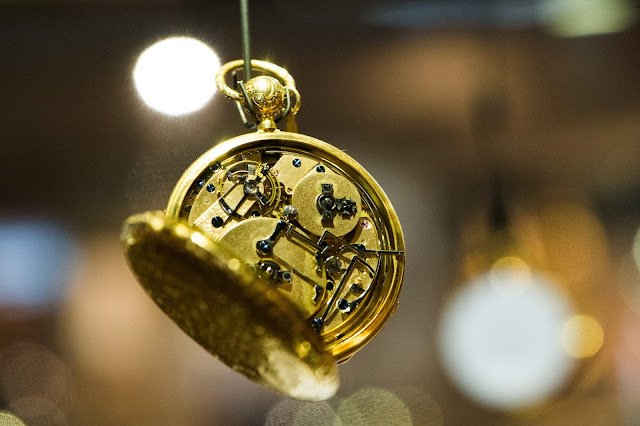De Bethune's watches have fascinated me for a long time, but for
various reasons I had been unable to personally handle any of their pieces.
Since I’m in Geneva, I decided to go by their boutique on La Place Longemalle.
Store manager Kevin Bega was an excellent host and showed me plenty of
De Bethune’s offerings. For a brand that produces around 400 pieces a year, it
had a lot to offer, both aesthetically and technically.
Several things stood out to me about the watches. The first
is how highly polished the titanium for many of the cases was, we usually see
titanium as a dull sandblasted grey mass but De Bethune’s almost look like a
combination of platinum and gunmetal. The second is how wearable its large 44mm and 42mm watches are, as an owner of 6.5-inch wrists, any number higher than 40mm is
usually a good indication I shouldn’t even bother trying a watch on, but both
the spring loaded lugs of the DB28 and the drop lugs of the DB25 Imperial
Fountain Snake fit reasonably well. Other admirable characteristics include the
black polished and interestingly shaped plates, round scale alligator lined
straps (presumably by Camille Fournet), and use of silicum in the balance wheel
and escapement and blued titanium for the 3D moon and other components.
I was glad to hear that the power reserve for most movements
was 5 days (4 for the perpetual calendar). I’d perhaps like to see comfortable
deployant clasps instead of the tang buckles, at least as an optional offering.
DB25 Imperial Fountain movement
DB25 with power reserve (40mm)
DB28 Aiguille D’Or limited edition (42.6mm)
Movement of the DB28 Aiguille D’Or limited edition
DB16 Perpetual calendar Tourbillon Dead seconds (43mm)
DB25 Imperial Fountain-Sold in a set of 12 zodiacs. With
mystery-style hands































